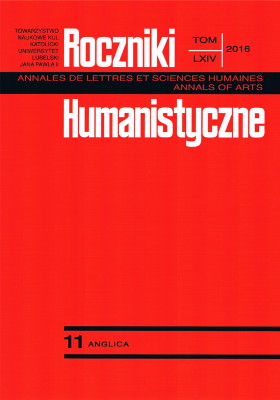Unaccusative or unergative: The case of the English verb to die
Unaccusative or unergative: The case of the English verb to die
Author(s): Anna DąbrowskaSubject(s): Language and Literature Studies, Theoretical Linguistics, Syntax
Published by: Towarzystwo Naukowe KUL & Katolicki Uniwersytet Lubelski Jana Pawła II
Keywords: unaccusative verbs; unergative verbs; unaccusativity diagnostics; unaccusative mismatch; syntax-lexicon interface; English
Summary/Abstract: The study examines the class status of the verb TO DIE in English. The verb under scrutiny (treated as a member of a semantically coherent class of disappearance verbs, together with disappear, expire, lapse, perish, vanish ) is tested against the six syntactic unaccusativity diagnostics valid for English. It is shown that three diagnostics do not work for the verb TO DIE, i.e., (1) auxiliary selection (inapplicable to all verbs in Modern English), (2) causative alternation, e.g., Philip died./ *The soldier died Philip, since the verb TO DIE belongs to a non-caused disappearance verb class, as argued by Levin (1993) and Levin and Rappaport Hovav (1995, 281–283), and (3) resultative constructions (although some collocations would be theoretically permissible, e.g., *He died stiff, no such sentences appear in the language corpus). On the other hand, the remaining three diagnostics yield positive results, i.e., (4) the occurrence of the adjectival participle, but with a reservation that it must be placed in a post-nominal position (*a DIED uncle / an uncle DIED in an accident), (5) there-insertion (the only existing example from the COCA Corpus: There DIED a myriad), and (6) the locative inversion diagnostics (the only instance found in the literature by Levin and Rappaport Hovav (1995, 303): (…) this year also DIED the possibility of turning the cup races (…)). Since only three unaccusativity tests out of the six mentioned above seem to work for the verb TO DIE, it might be problematic to treat it as a member of the unaccusative class. Additionally, the instances provided to illustrate the three diagnostics valid for the verb TO DIE rarely occur in the literature and the available corpora, and therefore they should rather be viewed as exceptions, which would cast serious doubt on the unaccusative status of the verb TO DIE. This would lead us to the conclusion that the verb TO DIE should be regarded as a real example of an Unaccusative Mismatch (Levin 1986), i.e., a clash between the results of two or more unaccusative diagnostics (discussed in Grimshaw 1987; Zaenen 1993; Levin and Rappaport Hovav 1995).
Journal: Roczniki Humanistyczne
- Issue Year: 64/2016
- Issue No: 11
- Page Range: 25-39
- Page Count: 15
- Language: English

